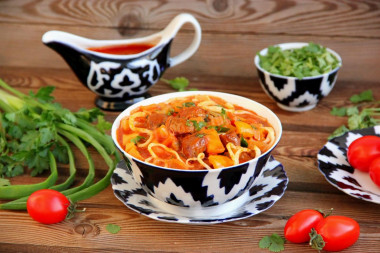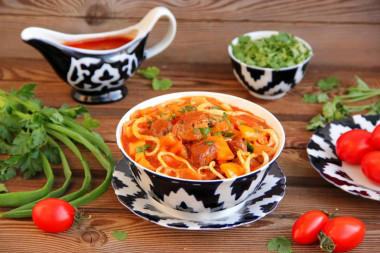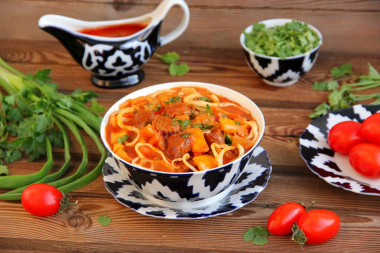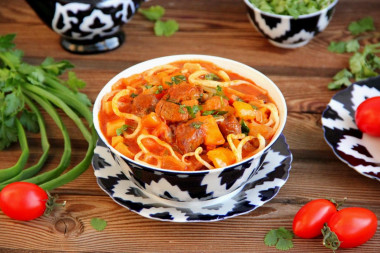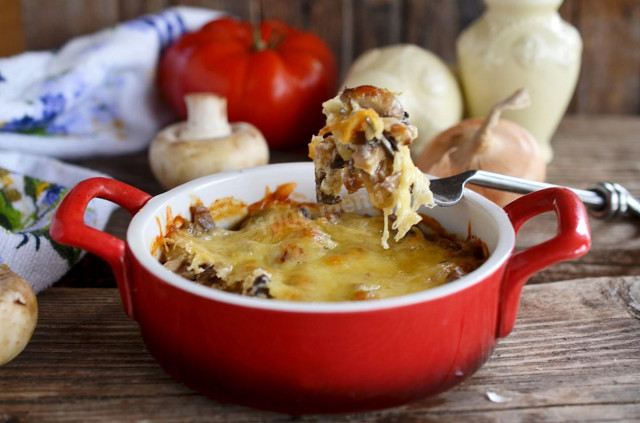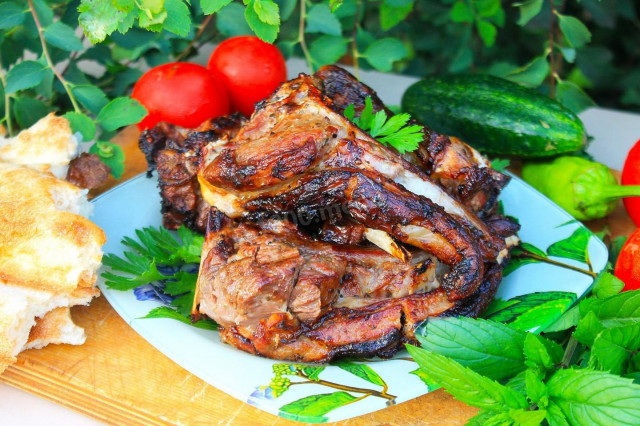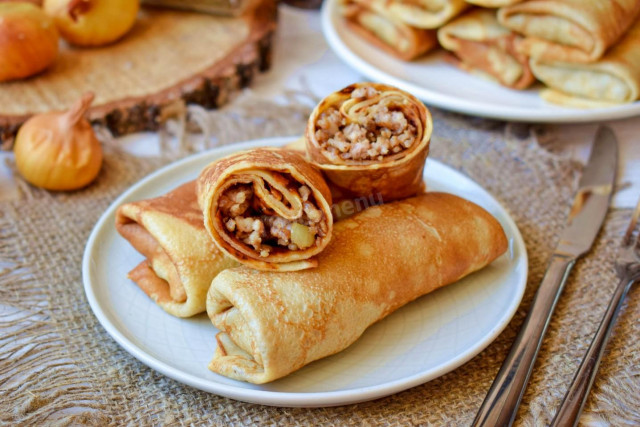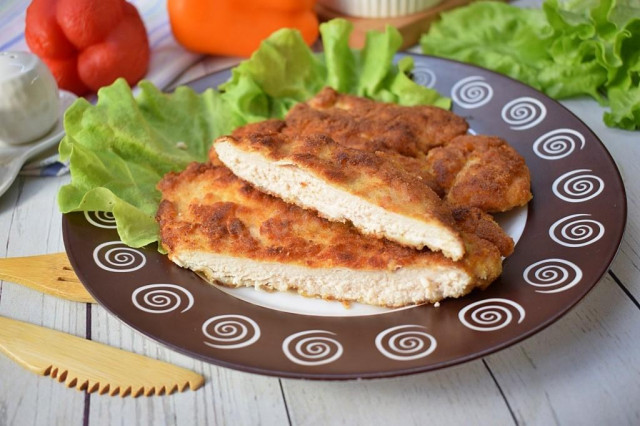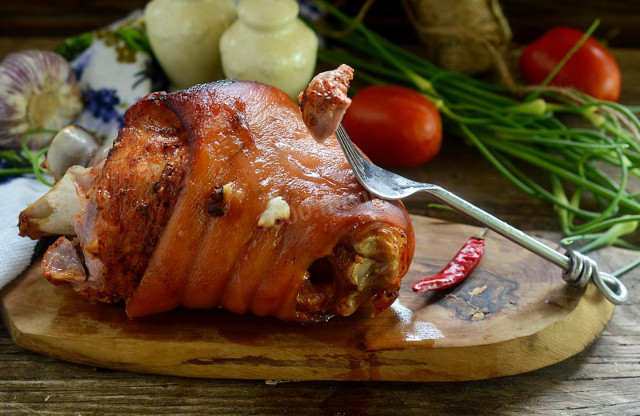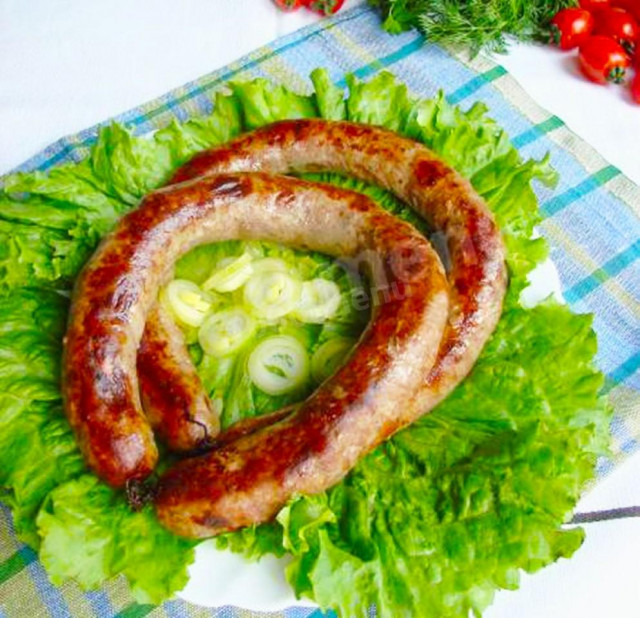Composition / ingredients
Step-by-step cooking
Step 1:

The necessary products for noodles - Lagman, must be at room temperature.
Step 2:
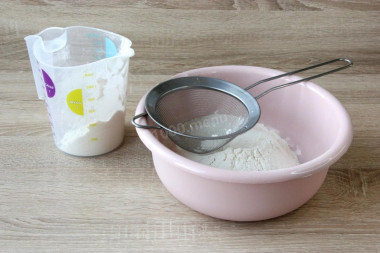
Cooking NOODLES. Sift flour into a wide bowl.
Step 3:

Make a recess in the flour, break an egg into it. In 1 cup of cooled boiled water, add 0.5 tsp salt, stir until completely dissolved. Pour salt water into the flour and knead the dough, first in a bowl, then on the table.
Step 4:
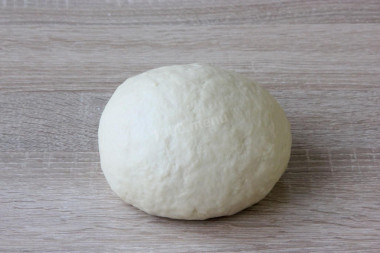
Lubricate the table and hands a little with vegetable oil. Knead until smooth. The finished dough does not stick to your hands, it is not tight, soft enough, but elastic. Round the dough into a ball, wrap it in a bag and put it in the refrigerator for at least half an hour, preferably for an hour.
Step 5:
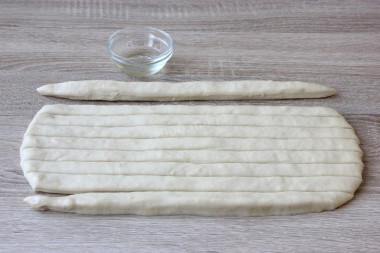
Then knead the dough with your hands into a uniform rectangular layer, about 2 cm thick. Cut the resulting cake into strips 1.5 - 2 cm wide . To make it convenient to work, the surface of the table, hands and dough should be slightly oiled. Cover all the dough with a film, take one cut strip at a time.
Step 6:
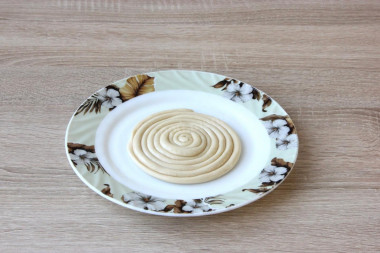
Roll out each strip of dough with your hands on the table into a long rope - rope, thick as a little finger, it looks like a children's skipping rope. The dough is very soft, elastic, easy to work with, it does not tear. Put the elongated and twisted dough in a spiral on a plate. The bottom of the plate, and then the dough on top, lubricate with vegetable oil. Cover with foil and leave on the table for 30 minutes. It took me several plates, as it is necessary to stack them in one layer.
Step 7:
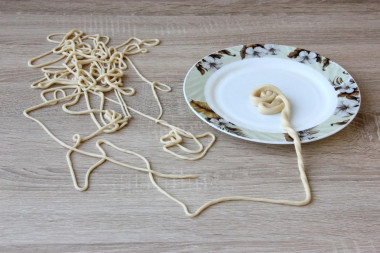
We put water to boil, a little salt, as for ordinary pasta. Now we pass the elongated strip of dough through our fingers, pulling it even thinner and longer. We wind the dough on our hands like yarn, we spread our hands in smooth jerks several times and lightly hit the table. The noodles magically stretch thinly and lie down on the table. The dough should be well lubricated so that the thin strips do not stick together.
Step 8:
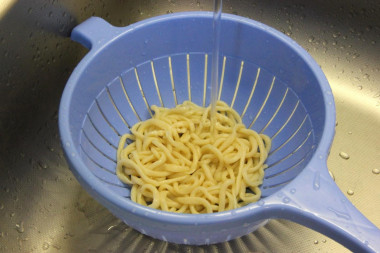
Boil the finished thin and very long noodles immediately in boiling water for literally 2-3 minutes, stirring constantly. Flip into a colander and rinse under cold water, let the water drain.
Step 9:
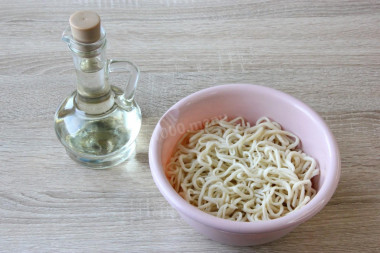
Transfer the washed noodles to a spacious bowl, pour a little vegetable oil and mix. So cook all the noodles, before serving it will need to be warmed, showered with boiling water. Noodles can be prepared in advance and stored in the refrigerator, you can cook immediately before making gravy, as the Uzbeks do. Who does not want to bother cooking noodles, you can boil ready-made purchased.
Step 10:
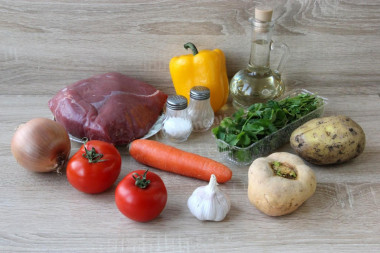
Products for meat gravy with vegetables can be different. Traditionally, lamb or beef meat is taken. But they put different vegetables, in addition to traditional onions, garlic, carrots, tomatoes and potatoes, they add: eggplant, zucchini, turnips, radish, green beans, radish, bell pepper, hot pepper.. - everything that has grown by the time of cooking and the hostess has. Greens and seasonings are mandatory.
Step 11:
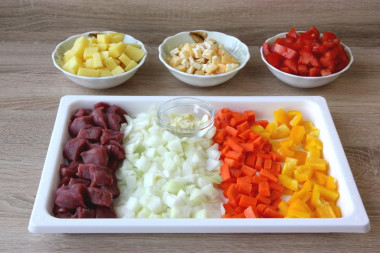
Preparing GRAVY. It is prepared very quickly at the very beginning, so all the spices, products must be prepared and cut in advance, then there will be no time. Wash the meat and dry it well, cut into medium cubes, as well as potatoes and tomatoes. Cut turnips and onions into smaller cubes. Pepper with a medium rectangle / with the phalanx of the little finger /, carrots of a similar length, but with thinner straws. Cut the garlic into thin rings. Rinse and chop the greens.
Step 12:

Heat the cauldron, heat the oil, fry the meat until golden brown. So that the heat of the oil does not decrease, throw the meat in several receptions. Add salt, pepper, spices for meat, garlic. Do not forget to interfere.
Step 13:

Then add onions, followed by carrots. Everything is fried very quickly.
Step 14:

Reduce the heat to medium and add the bell pepper. Pepper can be any color.
Step 15:
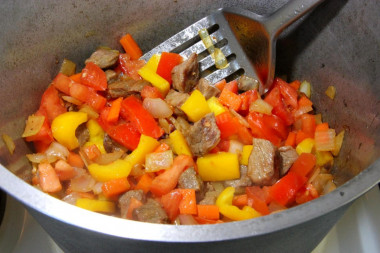
Toss the tomatoes, stir to remove all the frying from the bottom.
Step 16:

Add tomato paste, stir so that it is evenly distributed. /Many people wonder why pasta, if there are already tomatoes, but Uzbeks cook this way. Pasta gives intensity of color and taste, especially if tomatoes are winter /.
Step 17:
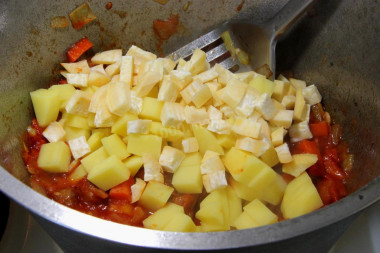
Then add potatoes and turnips.
Step 18:

1 tbsp.l. with a mound of flour and stir thoroughly quickly.
Step 19:
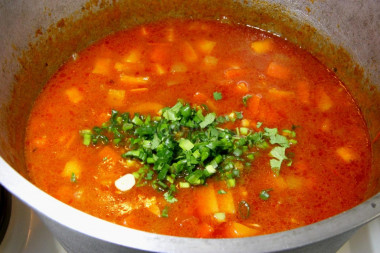
Add ordinary water at room temperature, it should hide the products for 2 fingers, this is for medium-thick gravy. Or add more water, you can serve it as soup. Reduce the heat to low and leave to simmer until the potatoes are ready, this is 20-30 minutes. At the end, add the greens, turn off the stove and let it brew for 15 minutes.
Step 20:

According to tradition, lagman is served in kesa (large bowl). Put noodles on the bottom, as many as a handful will capture. On top of vegetables with meat, add gravy, the amount is optional and be sure to sprinkle with fresh herbs.
Lagman translates literally as "pulled noodles" — a dish of Central Asian cuisine, presumably of Chinese origin. The main regional varieties differ in the peculiarities of cooking noodles and the composition of products /Uzbek, Tajik and Dungan lagman/.
Lagman is prepared from meat /mainly lamb, beef/, vegetables and pulled long noodles.
With a large amount of broth, lagman is similar to soup, with other cooking methods — like noodles with gravy and complex filling.
Noodles are pulled in a special way: unwinding a piece of dough like a child's skipping rope, pull it into a skein of thin noodles.
Moreover, Asian people do not recognize other noodles, they say that the taste is not the same.
Of course, they are prepared with an industrially made and homemade method, for which the dough is rolled and cut..
I decided to cook properly, with traditional stretched, very long noodles.
I want to say, it didn't work out right away, it was a little thick, and when cooking it still swells.
The second attempt was a success, the noodles turned out definitely what they should be. Then she began to confidently pull it out as thick as spaghetti and even thinner.
Every time I boiled and tasted another strip of noodles, and indeed, even noodles of different thickness differed in taste / for me it remained a mystery, because it is prepared from the same dough / !
The most delicious was noodles stretched as thick as 2 spaghetti!
How can I not believe after such an experiment in the preference of the whole people ? !
The caloric content of the products possible in the composition of the dish
- Ripe potatoes - 80 kcal/100g
- Baked potatoes - 70 kcal/100g
- Mashed potatoes - 380 kcal/100g
- Boiled potatoes - 82 kcal/100g
- Potatoes in uniform - 74 kcal/100g
- Fried potatoes - 192 kcal/100g
- Tomatoes - 23 kcal/100g
- Chicken egg - 157 kcal/100g
- Egg white - 45 kcal/100g
- Egg powder - 542 kcal/100g
- Egg yolk - 352 kcal/100g
- Ostrich egg - 118 kcal/100g
- Turnip - 30 kcal/100g
- Sweet pepper - 27 kcal/100g
- Carrot - 33 kcal/100g
- Dried carrots - 275 kcal/100g
- Boiled carrots - 25 kcal/100g
- Garlic - 143 kcal/100g
- Fresh basil - 27 kcal/100g
- Dried basil - 251 kcal/100g
- Dried ground cilantro - 216 kcal/100g
- Coriander - 25 kcal/100g
- Cilantro, coriander - 25 kcal/100g
- Dill greens - 38 kcal/100g
- Whole durum wheat flour fortified - 333 kcal/100g
- Whole durum wheat flour, universal - 364 kcal/100g
- Flour krupchatka - 348 kcal/100g
- Flour - 325 kcal/100g
- Vegetable oil - 873 kcal/100g
- Tomato paste - 28 kcal/100g
- Salt - 0 kcal/100g
- Water - 0 kcal/100g
- Onion - 41 kcal/100g
- Wheat flour - 325 kcal/100g
- Pepper - 26 kcal/100g
- Beef fillet (steak) - 189 kcal/100g
- Beef fillet (roast beef) - 381 kcal/100g


